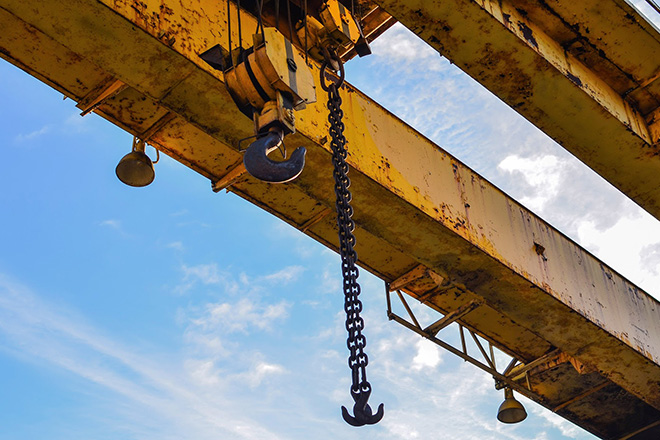Structural NDT Inspection on Overhead Cranes

IIA provided inspection services to a large facility with a number of overhead cranes. These cranes had been inspected every year by an overhead crane service company but had never had a full non-destructive inspection of the structures.
The results of the inspection speak volumes about the importance of regular structural inspections utilizing visual and non-destructive testing (NDT). All (100%) of the cranes had cracks throughout their structure in welds and parent material, and some of these cracks were so large they posed a significant risk of structural failure. Emergency repairs were required immediately to prevent an imminent failure. Engineering was required to develop more permanent repair methods, including potential complete replacement of an end truck in one case.
So, how can this happen if the cranes were inspected every year?
The problem is overhead crane service technicians are trained mostly to service the electrical and mechanical components of a crane. And they’re very good at it, but they have little to no training in structural inspection and often do not have non-destructive testing capability. Expecting these technicians to find structural cracks that are often difficult to see with the naked eye is simply unreasonable.
By the time cracks get big enough to see with the naked eye, repairs may be extensive and costly. This is why it’s important to perform regular inspections of all the highly stressed areas using nondestructive testing to ensure the safety of the equipment. This makes sense from a safety standpoint, but in the long run, it can also save your organization substantially on repairs and downtime. This is especially true for an operation where the crane is needed to feed production.
In Canada, Ontario Occupational Health and Safety Regulation 851 for Industrial Establishments, Sec. 51 states that a lifting device must be thoroughly examined by a competent person to determine its capability of handling the maximum load as often as the manufacturer prescribes, but at least once a year.
Generally, this inspection is performed by an overhead crane service company as is appropriate. However, a dedicated structural inspection should be considered as well to ensure the safety and long-term economy of the crane and to minimize unexpected downtime. This is particularly true if your crane is:
- More than five years old and has never been structurally inspected using NDT
- Critical to production
- Engaged in heavy service (loads near 50% capacity, high speeds, or more than 10 lifts/hour)
If your overhead crane matches one or more of the criteria above, IIA recommends supplementing your regular inspection with a thorough structural NDT inspection. The inspection should include:
- End trucks
- Bridge beam(s)
- Trolley
- Hook and block
- Winch shafts
- Rail clips
- Structural column
- Runway beams
NEED A QUOTE?
Simply fill out your name, number, and email below and someone from our team will contact you within 24 hours.




